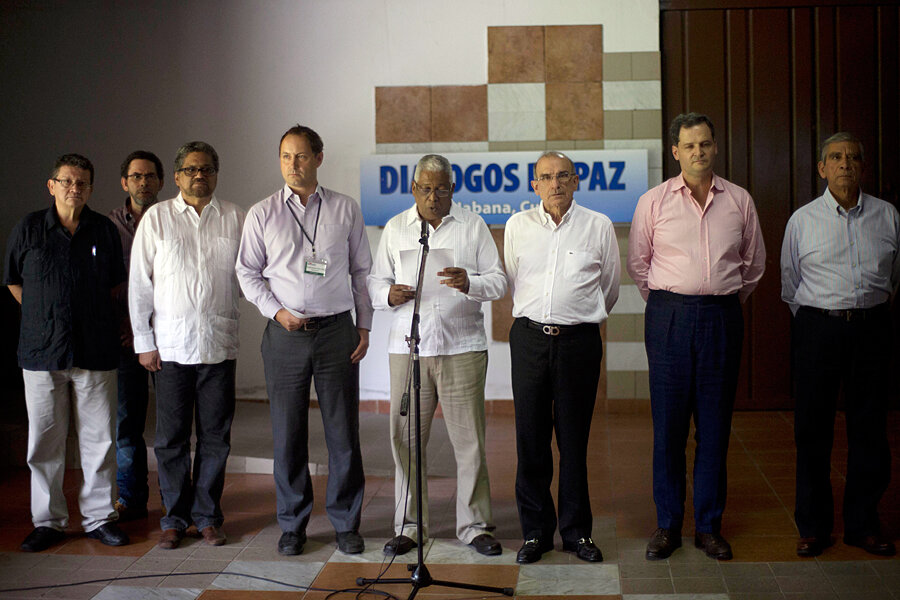How have Colombia-FARC peace talks affected scale of conflict?
Loading...
A new United Nations report provides some sense of the scale of Colombia's conflict since rebel group the Revolutionary Armed Forces of Colombia (FARC) began peace talks with the government in 2012, even as negotiations remain in limbo following the capture of a military general in November.
Approximately 50,000 victims were displaced due to actions by the FARC rebel group from November 2012 to June 2014, according to a recent report by the UN Office for the Coordination of Humanitarian Affairs (UNOCHA).
This figure represents roughly 17 percent of over 300,000 victims of displacement in Colombia during that period. Confrontations between the FARC and Colombian military accounted for an additional 27 percent of displacements.
Meanwhile, groups known as "BACRIM," from the Spanish acronym for "criminal bands," were responsible for 23 percent of displacements, and "other" groups were behind 30 percent, according to the UNOCHA report.
The UNOCHA report also included slightly different figures from Colombia's victims unit, known as the UARIV, which say that guerrilla groups – including both the FARC and the National Liberation Army (ELN) – were responsible for 48 percent of displacements; the BACRIM for 19 percent, and "unknown" actors for 31 percent.
The displacements were concentrated in the country's Pacific region, as well as the department of Antioquia.
Additionally, the UNOCHA report stated that since the peace talks began, 10.5 percent of Colombia's reported extortion cases were attributed to either the FARC or the ELN, without clarifying where this number is sourced from.
The report also stated that "one out of five" kidnappings in Colombia involve either theFARC or ELN, although common crime is responsible for the majority of cases – 76 percent.
InSight Crime Analysis
When it comes to the question of whether the FARC have been the primary drivers of Colombia's conflict since the peace talks began, the figures from the UNOCHA report don't present a very clearcut answer. This isn't helped by the report's occasionally unclear explanations of where it sourced its statistics from.
Some of the figures sourced from the UNOCHA report could certainly be used to make the case that other actors besides the FARC remain major contributors to the conflict. Even if the FARC and the ELN are responsible for 48 percent of Colombia's displacements, put together, the BACRIM and "unknown" actors" are responsible for 50 percent, according to the UARIV figures quoted in the report.







